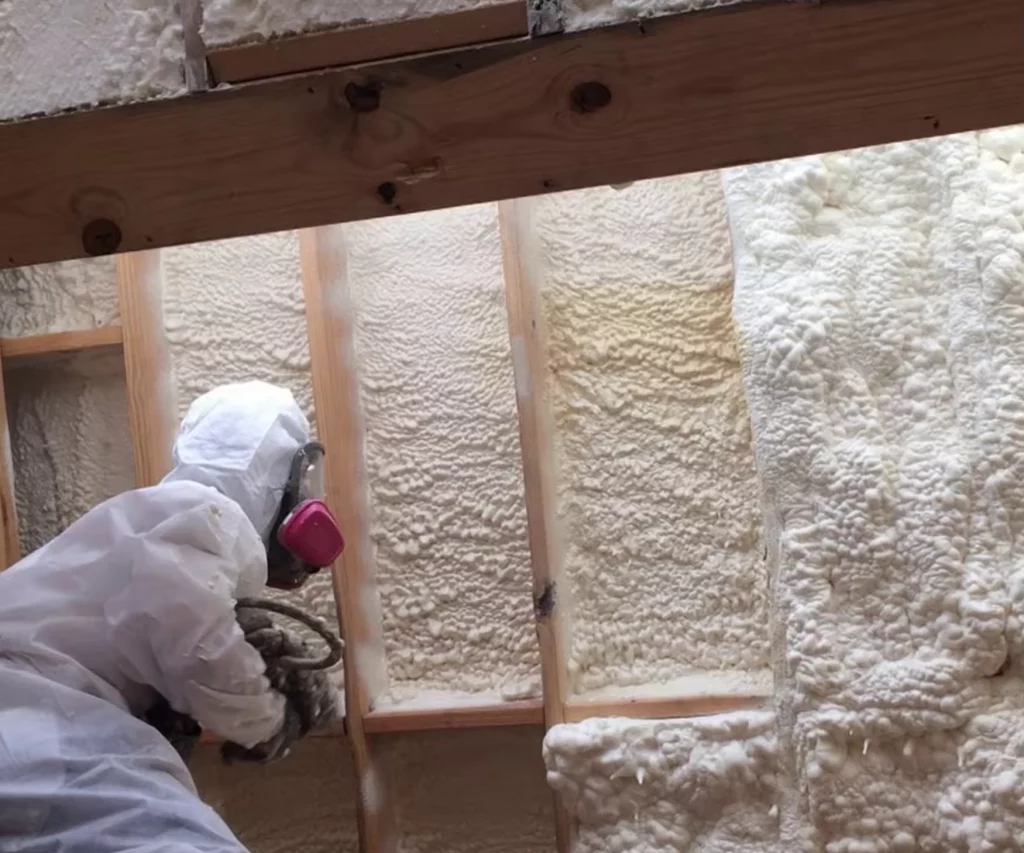Insulation plays a key role in regulating indoor temperature, improving energy efficiency, and maintaining building integrity. Among available options, spray foam insulation is often chosen for its longevity and performance. But how does it hold up over time compared to traditional materials?
This guide explains how long spray foam insulation typically lasts, how it compares to other insulation types, and what factors affect its performance.
Expected Lifespan of Spray Foam Insulation
Spray foam insulation, whether open-cell or closed-cell, can last over 30 years when properly installed. In most cases, it outperforms and outlasts other forms of insulation due to its chemical composition and resistance to moisture, mold, and pests. Once applied, it hardens into a solid structure that adheres to surfaces and does not settle, shift, or degrade easily.
Key Features That Contribute to Longevity
- Rigid structure: Once cured, spray foam stays in place.
- Moisture resistance: Especially in closed-cell foam, which acts as a vapor barrier.
- No sagging: Unlike fiberglass batts or blown-in cellulose.
- Air sealing: Reduces energy loss and prevents outside air from penetrating.
Lifespan Comparison With Other Insulation Materials
Fiberglass Insulation
- Lifespan: 10–20 years with potential degradation earlier in humid or poorly ventilated areas.
- Vulnerabilities: Prone to moisture absorption, mold growth, and compression over time.
Cellulose Insulation
- Lifespan: Around 20–30 years.
- Limitations: Can settle and lose effectiveness; higher fire and pest risk without proper treatment.
Mineral Wool (Rock Wool)
- Lifespan: 30+ years.
- Strengths: Fire-resistant, moisture-tolerant, does not promote mold growth.
- Downside: Does not seal air gaps.
Reflective or Radiant Barrier Insulation
- Lifespan: Around 10–20 years.
- Best Use: Works primarily in hot climates; not suitable as a standalone insulator in most cases.
Factors That Affect Lifespan
Installation Quality
Poor installation can shorten the lifespan of any insulation. Spray foam that is improperly mixed or unevenly applied may pull away from surfaces or fail to cure correctly.
Moisture and Ventilation
Though spray foam resists moisture, persistent water exposure or roof leaks can still impact performance. Ventilation helps reduce condensation risk, particularly in attics or crawl spaces.
Building Settling
Structural shifts can affect rigid materials like spray foam, although it’s less prone to movement than batts or loose-fill options.
Rodents and Pests
While spray foam isn’t a food source, it can be chewed through by rodents seeking entry points.
Energy Savings Over Time
Spray foam’s insulating properties lead to lower heating and cooling costs throughout its lifespan. It reduces thermal bridging, closes gaps around joists and studs, and serves as both insulation and an air barrier. Over decades, this translates into significant utility savings compared to materials that degrade or shift.
Long-Term Value and Cost Comparison
| Insulation Type | Average Lifespan | Air Sealing | Mold Resistant | Estimated ROI (20 yrs) |
|---|---|---|---|---|
| Spray Foam | 30+ years | Yes | Yes | High |
| Fiberglass | 10–20 years | No | No | Medium |
| Cellulose | 20–30 years | No | Partial | Medium |
| Mineral Wool | 30+ years | No | Yes | Medium |
| Radiant Barrier | 10–20 years | No | No | Low |
Where Longevity Matters Most
- Attics and Roof Decks: Prevents heat gain/loss year-round.
- Crawl Spaces: Moisture control and pest deterrent.
- Wall Cavities: Maintains consistent indoor climate.
- Metal Buildings: Reduces thermal bridging and condensation.
Planning for Installation? Here’s What to Consider
Choosing an insulation material isn’t just about upfront cost. Durability, resistance to damage, and overall energy performance affect long-term value. Spray foam lasts longer and typically requires no maintenance or replacement for decades.
Final Thoughts
Spray foam insulation stands out for its durability, energy efficiency, and long-term cost savings. Compared to fiberglass, cellulose, and other alternatives, it offers a longer service life with fewer issues over time. Whether you’re insulating a new build or upgrading an older home, choosing a solution that lasts makes a difference.
Contact Polyco Spray Foam today to discuss your project or schedule a free site assessment: (225) 286-3546 or info@polycosprayfoam.com.
Frequently Asked Questions
How long does spray foam insulation really last?
Over 30 years with proper installation and no major structural or moisture issues.
Can spray foam lose effectiveness over time?
Rarely. Unless damaged by water leaks or poor installation, it maintains performance.
How does spray foam compare in cost vs. fiberglass?
Upfront costs are higher, but long-term energy savings and lack of replacement needs balance it out.
Is spray foam safe for indoor use?
Once cured, it’s inert and safe. Professional application is recommended to avoid fumes during installation.
Does it work in both hot and cold climates?
Yes. It reduces both heat gain and heat loss, making it suitable year-round.
Can I install spray foam myself?
DIY kits exist but are best for small areas. Large-scale or whole-house insulation should be handled by licensed professionals.
What’s the difference between open-cell and closed-cell spray foam?
Closed-cell is denser, more moisture-resistant, and suitable for exterior or below-grade applications. Open-cell is lighter and provides excellent sound absorption.
Will spray foam crack or shrink?
No, not if applied correctly. It expands and bonds to surfaces but remains stable once cured.
Does it attract pests?
No. It does not serve as food or nesting material, though rodents can chew through it to get inside.
Can it be applied over existing insulation?
In many cases, yes. A site assessment can determine if existing insulation must be removed.

